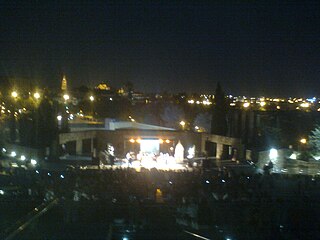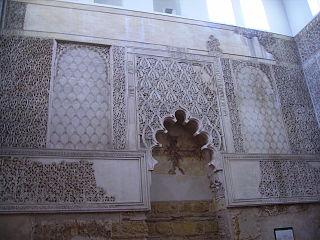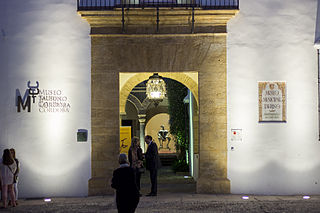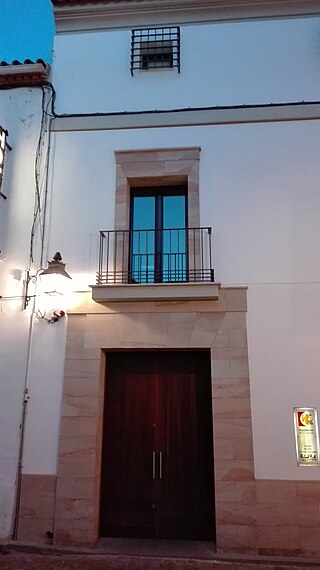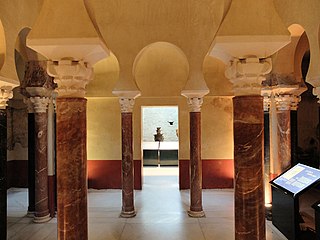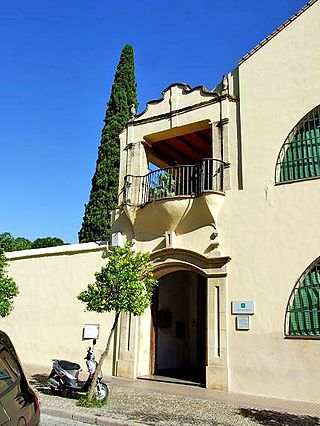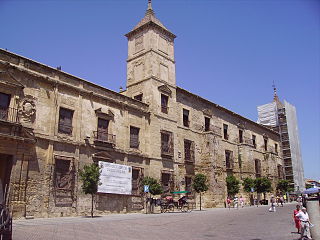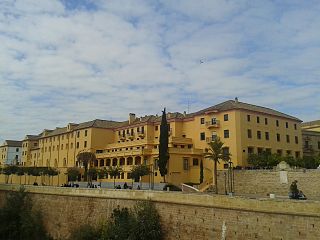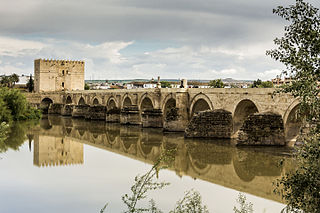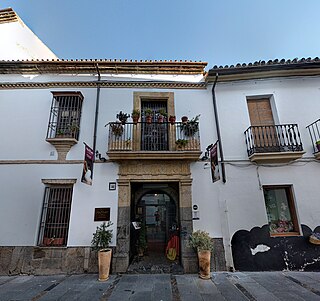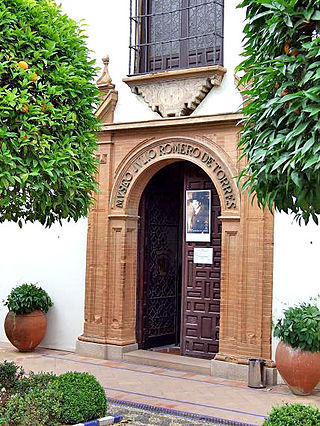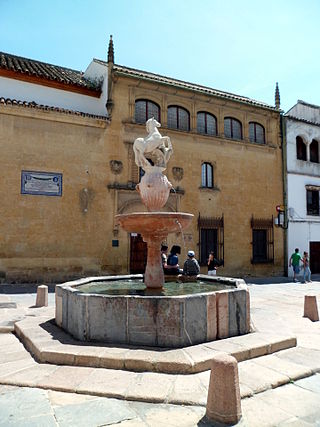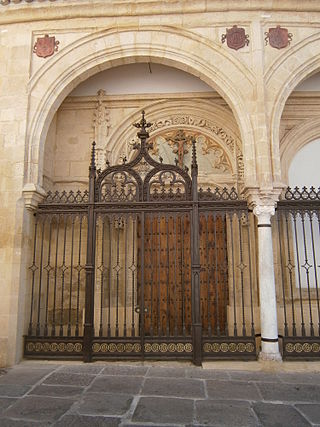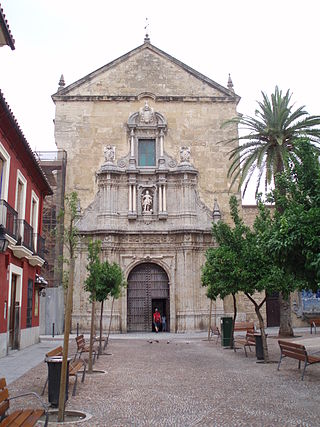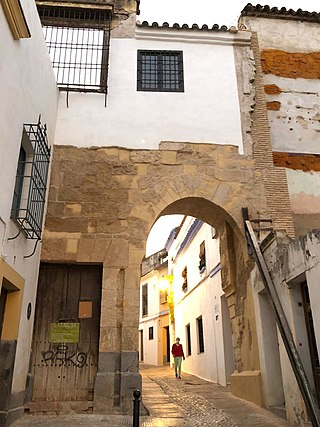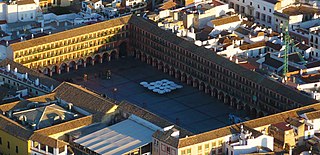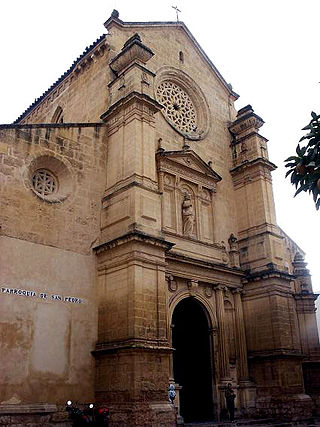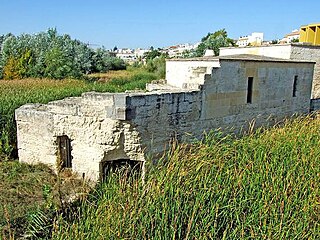Self-guided Sightseeing Tour #2 in Córdoba, Spain
Legend
Guided Free Walking Tours
Book free guided walking tours in Córdoba.
Guided Sightseeing Tours
Book guided sightseeing tours and activities in Córdoba.
Tour Facts
6 km
100 m
Experience Córdoba in Spain in a whole new way with our free self-guided sightseeing tour. This site not only offers you practical information and insider tips, but also a rich variety of activities and sights you shouldn't miss. Whether you love art and culture, want to explore historical sites or simply want to experience the vibrant atmosphere of a lively city - you'll find everything you need for your personal adventure here.
Activities in CórdobaIndividual Sights in CórdobaSight 1: Teatro de la Axerquía
The Teatro de la Axerquía is an open-air theatre in Cordoba, Spain, as well as the performance of concerts and cultural events of any kind. It is located on Menéndez Pidal Avenue, next to Cruz Conde Park and the Hill of the Burns.
Wikipedia: Teatro de la Axerquía (Córdoba) (ES), Website, Wheelchair Website
Sight 2: Castle of the Christian Monarchs
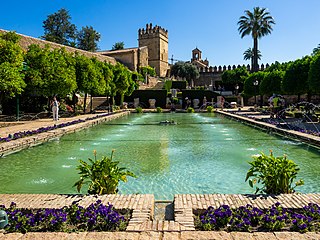
The Alcázar de los Reyes Cristianos, also known as the Alcázar of Córdoba, is a medieval alcázar located in the historic centre of Córdoba, next to the Guadalquivir River and near the Mosque-Cathedral. The fortress served as one of the primary residences of Isabella I of Castile and Ferdinand II of Aragon.
Wikipedia: Alcázar de los Reyes Cristianos (EN), Website, Wheelchair Website
Sight 3: Sinagoga
The Córdoba Synagogue is a historic former Jewish congregation and synagogue located at 20 Calle de los Judíos in the Jewish Quarter of Córdoba, Andalusia. Completed in 1315, with its Mudéjar design attributed to Isaac Makheb, the synagogue's small size points to it possibly being the private synagogue of a wealthy resident. It is also possible that Córdoba's complex of buildings was a yeshiva, kollel, or beth midrash. Another possibility is that it was initially a local trade guild’s workroom or a residence before converting to a synagogue.
Sight 4: Museo Taurino de Córdoba
The Municipal Bullfighting Museum of Cordoba is the bullfighting museum of the city of Cordoba, in Spain. It is located in the Maimonides square of that city.
Sight 5: Iglesia de San Pedro de Alcántara
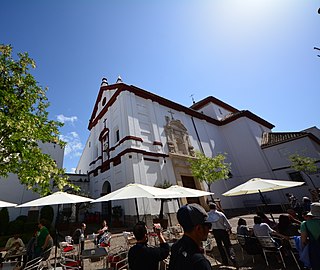
The church of San Pedro de Alcantara is a Roman Catholic church located in the city of Cordoba, Spain. It is located in the Plaza del Cardenal Salazar in the Jewish Quarter of Cordoba, included in the denomination of Historic Center of Cordoba, recognized as a World Heritage Site. It is also protected with the category of Asset of Cultural Interest.
Sight 6: Capilla de San Bartolomé
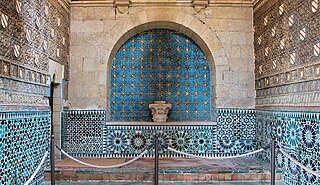
The Chapel of San Bartolomé is a funerary chapel in the historic centre of Córdoba, Spain. It is dated between 1390 and 1410. Richly decorated, it is one of the city's finest examples of Mudéjar art.
Sight 7: Centro de Arte Moderno Rafael Botí
The Rafael Botí Art Center is a contemporary art center based in Córdoba (Spain), promoted by the Rafael Botí Provincial Foundation of Plastic Arts, dependent on the Provincial Council of Córdoba. It was launched in June 2015 after having executed an investment of more than 2.4 million euros.
Sight 8: Baños del Alcázar Califal
The Caliphal Baths are an Islamic bathhouse complex in Córdoba, Spain. They are situated in the historic centre which was declared a World Heritage Site by UNESCO in 1994. The complex was contiguous to the former Caliphal Palaces of the Umayyads, whose inhabitants it served. Today the baths have been partially reconstructed and are open as a museum.
Sight 9: Monumento a los Enamorados

The Lovers' Monument or Lovers' Monument is a monument located in Córdoba (Spain), inaugurated in 1971 in memory of the love between the poet Ibn Zaydun and the poet and princess Wallada. They lived at approximately the same time as the Infantes de Lara, but they are known mainly for their love poetry. The monument is a small temple formed by four columns without a base, a roof and a pedestal with two hands.
Sight 10: Biblioteca Provincial
The Córdoba Public Library is a public library located in Córdoba, Spain. The Public Library of the State - Provincial Public Library of Córdoba is a center of state ownership managed by the Ministry of Culture of the Junta de Andalucía and integrated into the Andalusian System of Libraries and the Spanish Library System. In 1984, the Ministry of Culture transferred its management to the Junta de Andalucía, although the ownership of the buildings and bibliographic funds continue to belong to the State.
Sight 11: Palacio Episcopal
The Episcopal Palace in Córdoba, Spain, is situated in the historic centre of the city, just opposite the west front of the Mosque–Cathedral of Córdoba.
Sight 12: Seminario de San Pelagio
The Major Seminary of San Pelagio is a priestly formation center of the Catholic Church located in the Andalusian city of Cordoba, Spain. It was created in 1583, and is located very close to the Mosque-Cathedral of Cordoba and the Alcázar de los Reyes Cristianos. With its more than four centuries of history, it is one of the oldest living institutions in Cordoba.
Sight 13: Molino de la Albolafia
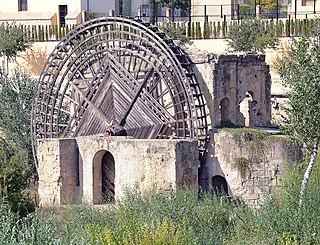
The Albolafia, also known as the Molino de la Albolafia in Spanish, is a medieval noria along the Guadalquivir River in the historic center of Córdoba, Spain. It is one of several historic watermills of Cordoba and is located close to the Roman Bridge and to the Christian Alcazar. It is commonly believed to date from the Islamic era of the city, though its exact origins are uncertain.
Sight 14: Roman Bridge of Córdoba
The Roman bridge of Córdoba is a bridge in the Historic centre of Córdoba, Andalusia, southern Spain, originally built in the early 1st century BC across the Guadalquivir river, though it has been reconstructed at various times since. It is also known locally as the Old Bridge as for two thousand years, until the construction of the San Rafael Bridge in the mid-twentieth century, it was the city's only bridge across the river.
Sight 15: Triunfo de San Rafael
The Triumph of San Rafael del Puente Romano is the oldest of the many triumphs in the city of Córdoba (Spain) dedicated to the archangel San Rafael, guardian angel of the city. A work of Bernabé Gómez del Río in 1651, it was incorporated into the Roman Bridge on its parapet, to bless all those visitors who left and entered through the Gate of the Bridge.
Wikipedia: Triunfo de San Rafael (Puente romano de Córdoba) (ES)
Sight 16: Baños de la Pescadería
The Pescadería baths are Arab baths or hammams located on Cara Street in the city of Cordoba, Spain. These baths date back to the 10th century and were later refurbished in the 14th and 15th centuries. The complex was declared an Asset of Cultural Interest in the category of historic site in 1954.
Sight 17: Museo de Julio Romero de Torres
The Julio Romero de Torres Museum is a museum located in the city of Córdoba, Spain, which is notable for containing the largest collection of the famous Cordoban painter Julio Romero de Torres. It is located in the building of the old Hospital of la Caridad, which also houses the Museum of Fine Arts of Córdoba. The museum has been declared a Bien de Interés Cultural in the category of monument since 1962.
Wikipedia: Julio Romero de Torres Museum (EN), Wheelchair Website
Sight 18: Fuente del Potro
The Potro fountain is a fountain located in the Plaza del Potro in the city of Córdoba (Spain).
Sight 19: Museo de Bellas Artes
The former Hospital of the Holy Charity of Our Lord Jesus Christ is located in the San Francisco-Ribera neighborhood of the city of Córdoba (Spain). It was founded by the Brotherhood of the Holy Charity of Our Lord Jesus Christ in the fifteenth century. Today it is the Museum of Fine Arts of Cordoba, located in the Plaza del Potro.
Wikipedia: Hospital de la Caridad (Córdoba) (ES), Url, Facebook
Sight 20: Iglesia de San Francisco y San Eulogio
The Church of St. Francis and St. Eulogius is a Roman Catholic church in Cordoba, Spain. It belongs to the so-called Fernandine churches, as it was founded by the Castilian king Ferdinand III in the thirteenth century. Its original name was the convent of San Pedro el Real and it was managed by the Franciscan Order, hence its current name. The temple was declared an Asset of Cultural Interest in the category of Monument on March 24, 1982.
Sight 21: Arco del Portillo
The Portillo Arch, also known as the Arch of San Francisco or the Corbache Portillo, is an opening opened at the end of the fourteenth century in the eastern part of the wall that divided the town and the Axerquía in the city of Cordoba, Spain. It is located on San Fernando Street, in front of the church of San Francisco. It joins the Cathedral neighbourhood, belonging to the old Medina, and the San Francisco-Ribera neighbourhood, in the old Axerquía.
Sight 22: Museo Arqueológico y Etnológico de Córdoba
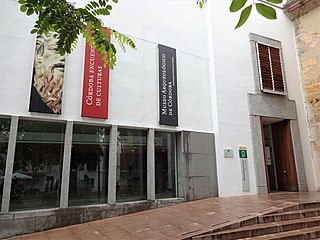
The Archaeological and Ethnological Museum of Córdoba is a museum in Córdoba, Spain. Owned by the Spanish State, its management has been transferred to the Ministry of Culture of the Junta of Andalusia.
Wikipedia: Archaeological and Ethnological Museum of Córdoba (EN)
Sight 23: Iglesia de Santo Domingo de Silos
The Royal Church of El Salvador and Santo Domingo de Silos and the College of Santa Catalina de Córdoba (Spain) were conceived as a single entity and constitute a set of buildings around which the urban fabric of the city is formed. It was built by the Society of Jesus in the sixteenth century.
Wikipedia: Iglesia de San Salvador y Santo Domingo de Silos (Córdoba) (ES)
Sight 24: Plaza de la Corredera
Get Ticket*The Plaza de la Corredera is one of the most emblematic places in the Spanish city of Cordoba. It is the only quadrangular main square in Andalusia and is located in the historic district of Axerquía. Although the first evidence of an irregular square is from the fourteenth century, the current square was built in 1683 by the architect Antonio Ramós Valdés by order of the corregidor Francisco Ronquillo Briceño. Its name comes from the bullfights that were held in this space, although autos-da-fe and executions of the Spanish Inquisition were also held.
Sight 25: Iglesia de San Pedro
San Pedro is a minor basilica in Córdoba, Spain. The church is located in the square of the barrio (quarter) bearing its name.
Sight 26: Molino de Martos
The Martos mill is an old mill located in Cordoba on the Guadalquivir River, known between the thirteenth and eighteenth centuries as the watermill or waterwheel. The Martos mill is located in what was known as the "San Julián stop", which took its name from the "San Julián dam", and in front of the "Martos gate", the entrance of the wall to the city whose road came from the municipality of Jaén. It is framed in the eleven so-called Molinos del Guadalquivir, declared an Asset of Cultural Interest in 2009.
Share
How likely are you to recommend us?
Disclaimer Please be aware of your surroundings and do not enter private property. We are not liable for any damages that occur during the tours.
GPX-Download For navigation apps and GPS devices you can download the tour as a GPX file.
